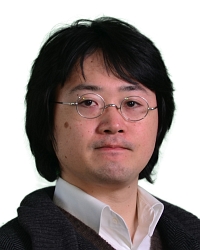TR2022-097
EEG-GAT: Graph Attention Networks for Classification of Electroencephalogram (EEG) Signals
-
- , "EEG-GAT: Graph Attention Networks for Classification of Electroencephalogram (EEG) Signals", International Conference of the IEEE Engineering in Medicine & Biology Society (EMBS), DOI: 10.1109/EMBC48229.2022.9871984, July 2022.BibTeX TR2022-097 PDF
- @inproceedings{Demir2022jul,
- author = {Demir, Andac and Koike-Akino, Toshiaki and Wang, Ye and Erdogmus, Deniz},
- title = {{EEG-GAT: Graph Attention Networks for Classification of Electroencephalogram (EEG) Signals}},
- booktitle = {International Conference of the IEEE Engineering in Medicine \& Biology Society (EMBS)},
- year = 2022,
- month = jul,
- publisher = {IEEE},
- doi = {10.1109/EMBC48229.2022.9871984},
- issn = {2694-0604},
- isbn = {978-1-7281-2782-8},
- url = {https://www.merl.com/publications/TR2022-097}
- }
- , "EEG-GAT: Graph Attention Networks for Classification of Electroencephalogram (EEG) Signals", International Conference of the IEEE Engineering in Medicine & Biology Society (EMBS), DOI: 10.1109/EMBC48229.2022.9871984, July 2022.
-
MERL Contacts:
-
Research Areas:
Artificial Intelligence, Machine Learning, Robotics, Signal Processing
Abstract:
Graph neural networks (GNN) are an emerging framework in the deep learning community. In most GNN applications, the graph topology of data samples is provided in the dataset. Specifically, the graph shift operator (GSO), which could be adjacency, graph Laplacian, or their normalizations, is known a priori. However we often have no knowledge of the grand-truth graph topology underlying real-world datasets. One example of this is to extract subject-invariant features from physiological electroencephalogram (EEG) to predict a cognitive task. Previous methods use electrode sites to represent a node in the graph and connect them in various ways to hand-engineer a GSO e.g., i) each pair of electrode sites is connected to form a complete graph, ii) a specific number of electrode sites are connected to form a k-nearest neighbor graph, iii) each pair of electrode site is connected only if the Euclidean distance is within a heuristic threshold. In this paper, we overcome this limitation by parameterizing the GSO using a multi-head attention mechanism to explore the functional neural connectivity subject to a cognitive task between different electrode sites, and simultaneously learn the unsupervised graph topology in conjunction with the parameters of graph convolutional kernels

